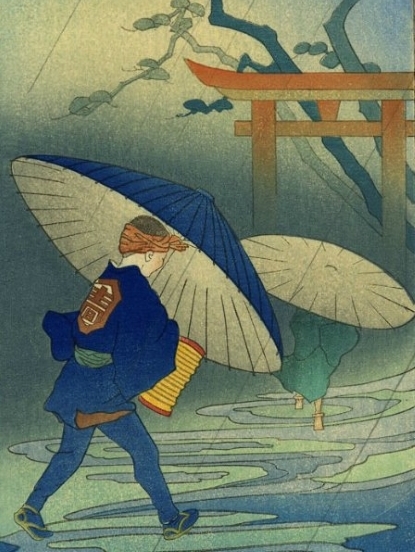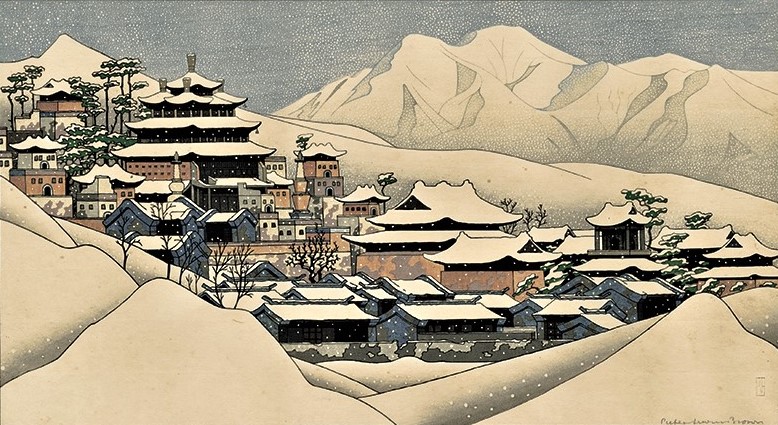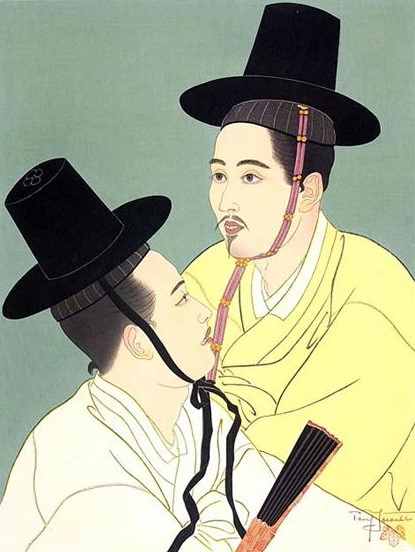FAR EASTERNERS
In painting, Orientalism was a powerful movement and it is clear that this pictorial school accompanied the European expansion from the 19th and 20th centuries. The regions and countries primarily devoted were therefore mostly those where the French and the United Kingdom colonizing powers settled: North Africa, Egypt, and, to a lesser extent, India. These were therefore the privileged places of this new interest which was,in fact,the arrival of European painting on new and virgin shores.
Far Orientalism was born with a different approach.Admittedly,the taste for discovery and travel was shared, but the European artists who landed in distant Asia at the beginning of the 20th century were first of all in search of cultures and paintings different from their own, as these had been expressed for centuries in countries with old civilizations, and so had to be understood and appreciated in a spirit of openness and respect.
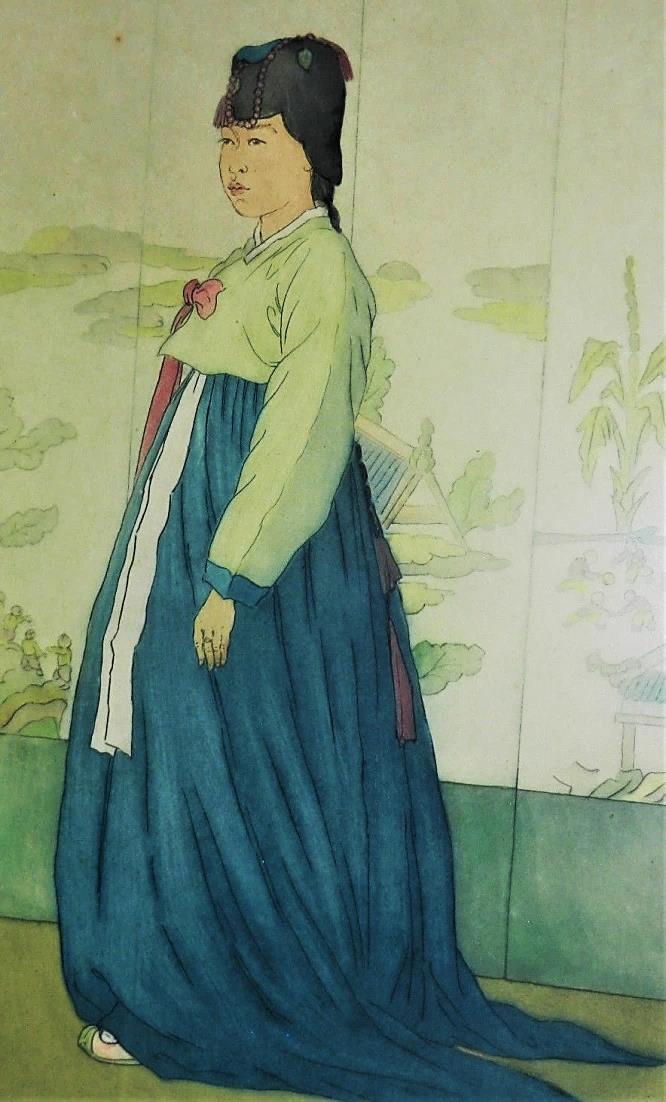


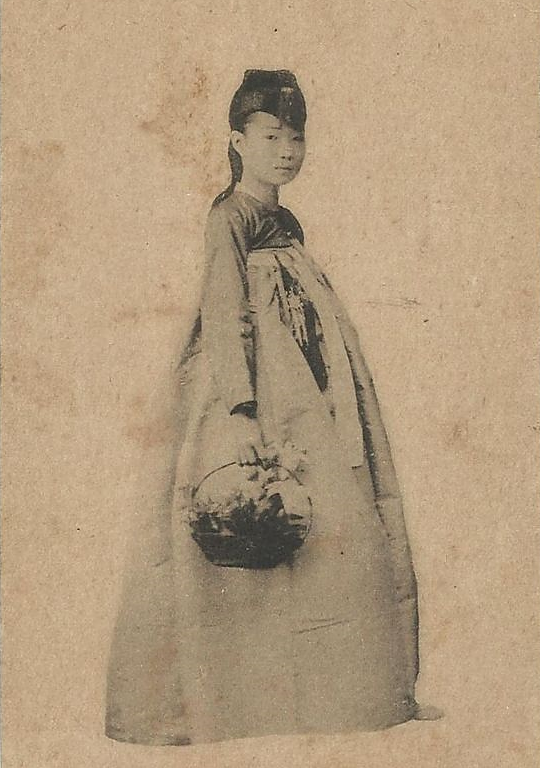


Precursors, first driven by curiosity, discovered Japan and settled there in the first decades following the forced opening of the country in 1853 by the American squadrons of Commodore Perry. As such, the British Charles Wirgman arrived between 1860 and 1890 as did the Frenchman Georges Bigot, arriving between 1880 and 1900. Both were illustrators who introduced Japanese society to Europe, often in the form of pertinent caricatures. The painter Félix Régamey, who accompanied Emile Guimet on his Asian expeditions, was also an influential pioneer. Indeed, all the Western artists who discovered Japonism at this time, and in particular the Impressionists, were also to become the godfathers of the young painters who turned their gaze towards Asia at the end of the 19th century.
The Anglo-Saxons are the leaders of the Far Eastern movement, with the United States and the United Kingdom maintaining closer relations with this region than other European countries. (The case of France and Indochina or The Nederlands and Indonesia are particular as the approach is more akin to that of Orientalism and is therefore not part of this study, with some exceptions). These artists made the choice at the beginning of the 20th century to reside locally - mainly in Japan but also in China and Korea - to observe these new worlds and learn how to represent them. It was the American Helen Hyde who laid the first stone in 1899 in Japan and was followed in the first decades of the century by her compatriots: Lilian Miller, Bertha Lum, Charles Bartlett, Cyrus Baldridge, Charles Pepper ; by the British : Elizabeth Keith, Katharine Jowett, Pieter Brown, Thomas Handforth ; by the Frenchmen: Paul Jacoulet, Noël Nouet, Alexandre Iacovleff, Léa Lafugie, Antoinette Boullard-Devé ; and by the Germans : Emil Orlik, Fritz Capelari and Willy Seiler. It is worth adding to this list a few artists who had not left their native land but who had dedicated themselves to painting the Far East from their studio such as Elyse Lord, Dorsey Tyson and John Winkler. All had initially devoted themselves to painting on canvas or, more frequently, working with aquarelle or drawing but very quickly are drawn towards the discovery of print and wood engraving techniques.
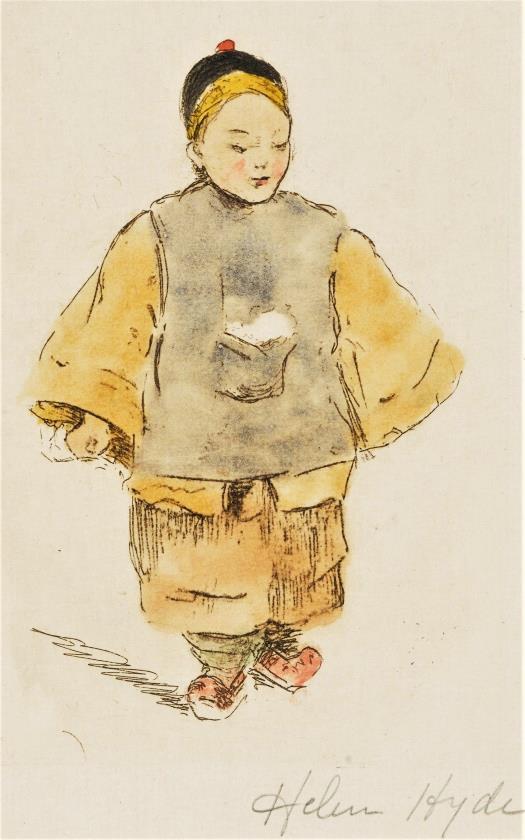


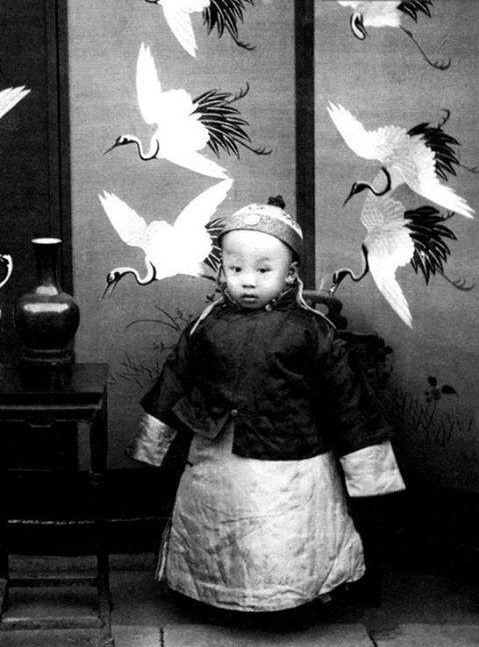


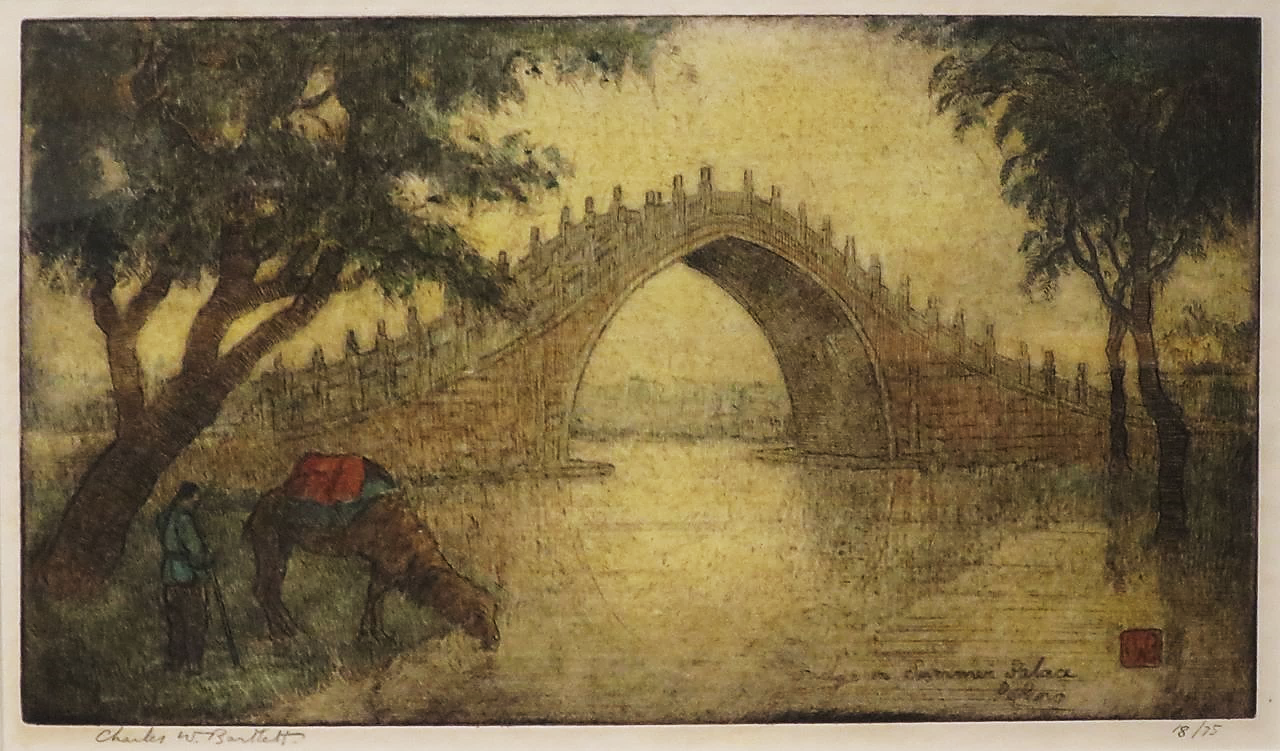

Originally from China, wood engraving developed in Japan as of the 17th century and enjoyed its period of glory between 1780 and 1850 notably with Kiyonaga, Utamaro, Sharaku, Hiroshige and Hokusai. This school of "images of the floating world," known as Ukiyo-e, is that of the pacification and prosperity of a gentrified country which takes pleasure in surrounding itself with prints representing famous landscapes, beautiful courtesans, Kabuki theater actors, legendary creatures or, more discreetly, erotic scenes (the shunga). Many craftsmen live from this artistic tradition because, around the creative painter gather those who "produce" and introduce the work to the public by engraving and printing it.
The situation changed in the second half of the 19th century: the forced opening of the country from 1853 caused a political and social imbalance whilst provoking an accelerated modernization in all domains, including our pictorial realm, in which arrived modernized reproduction techniques. It was paradoxically during this period when the West discovered with amazement and enthusiasm the traditional prints of the "floating world" that these experienced a net decline locally in Japan, causing a sharp decline in production of prints and a scarcity of artists and craftsmen who had been dedicated to it. Our first painters who thus had landed in Japan at the beginning of the 20th century, forged by Japanism then flourishing in the West, found the greatest difficulty in being admitted to local circles where the tradition of Ukiyo-e remained. (During his first stay, Bertha Lum had been surprised by how many months had passed before discovering a wood engraver…) As a second paradox, this Western interest is one of the causes for the revival of traditional printmaking as of 1910 with the Shin Hanga movement, thanks in particular to a few exceptional artists such as Ito Shinsui, Kawase Hasui and Hiroshi Yoshida.
The different stages of the creation of the print - drawing, engraving, printing - oblige Western artists to associate themselves with Master Craftsmen, of whom publishers are often the main conductors. Watanabe Shozaburo (1885-1962) played a fundamental role in promoting these few painters who’d arrived from the distant West to Japanese artists and craftsmen. Thanks to his insight in spotting talent, his help in mobilizing the best craftsmen along with his proven business acumen, Watanabe Shozaburo could be credited for the success of several leaders of the movement such as Elizabeth Keith, Bertha Lum, Charles Bartlett, Cyrus Baldridge, Pieter Brown and Paul Jacoulet. Other names must be mentioned: Kobayashi Bunshichi helped Helen Hyde and Charles Pepper, the engraver Matsumoto and the printer Nishimura Kumakichi II shared their knowledge with Lilian Miller and the engravers Kazuo Yamagishi and Kentaro Maeda loyally accompanied Paul Jacoulet. These close collaborations also explain why these Western artists were, very early on, recognized in Japan and are still so today, on par with the best representatives of the Shin-Hanga movement (note that only Lilian Miller joined the minority movement of Sosaku Hanga, whose works are made by one single artist, painter, engraver and printer).

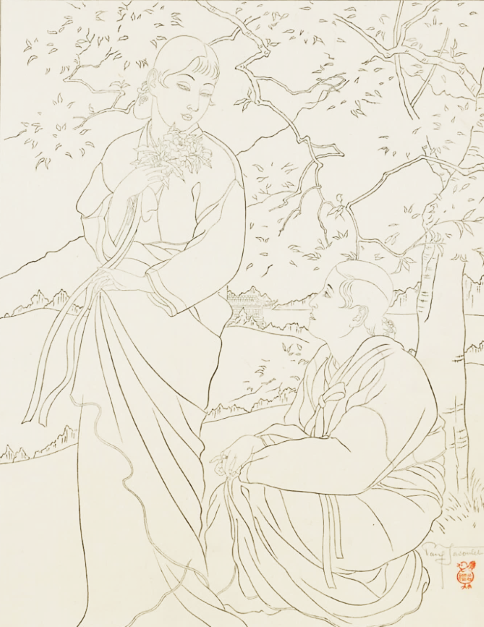


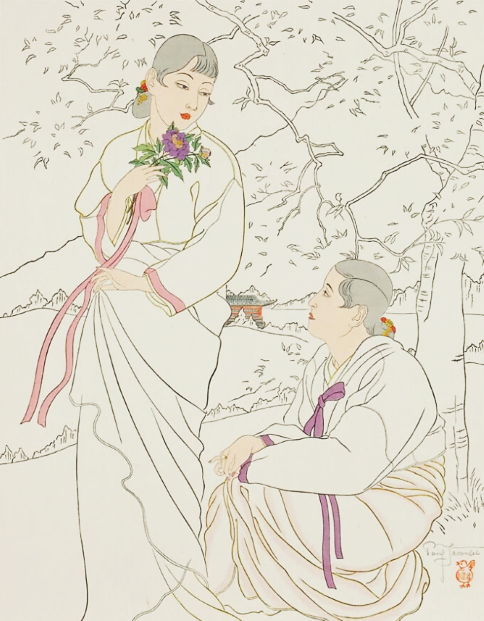


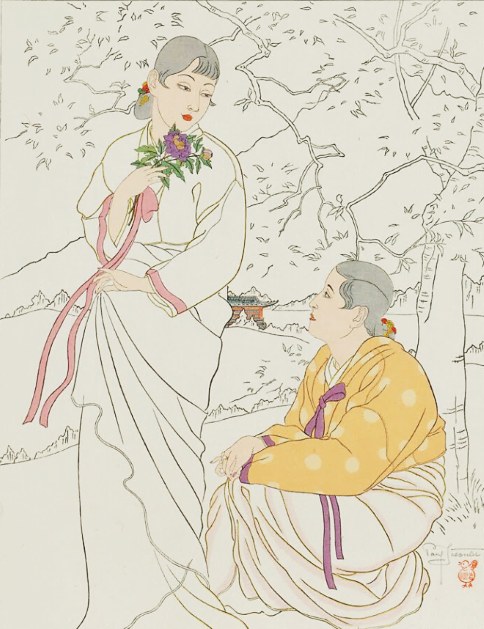


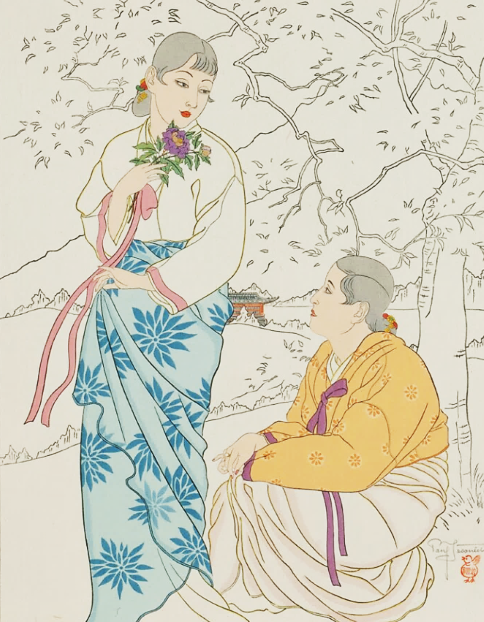


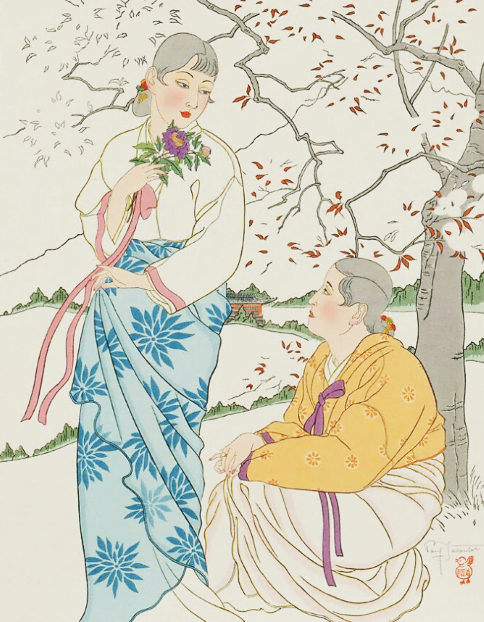


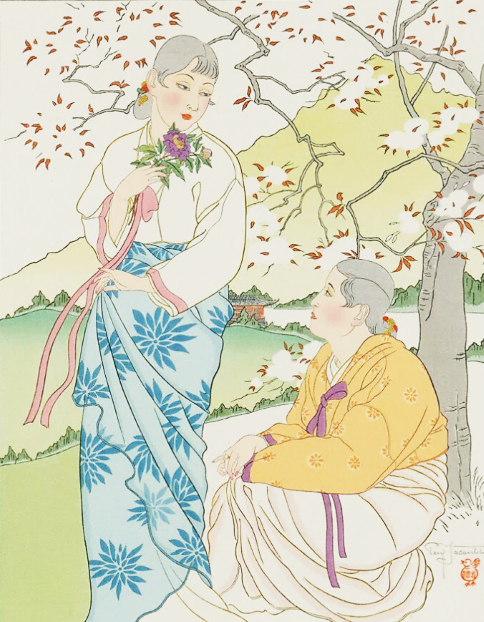


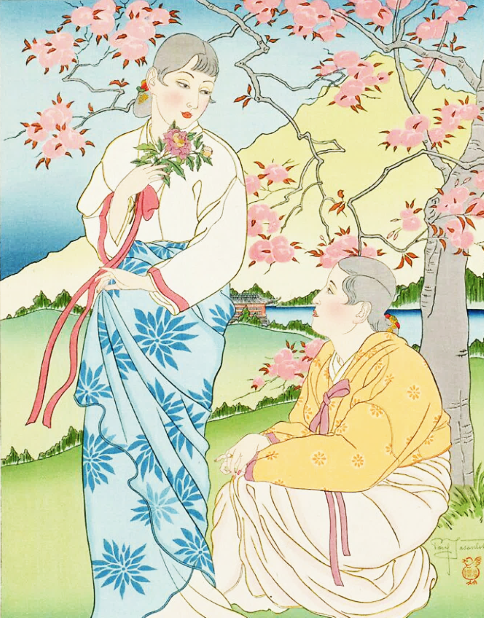


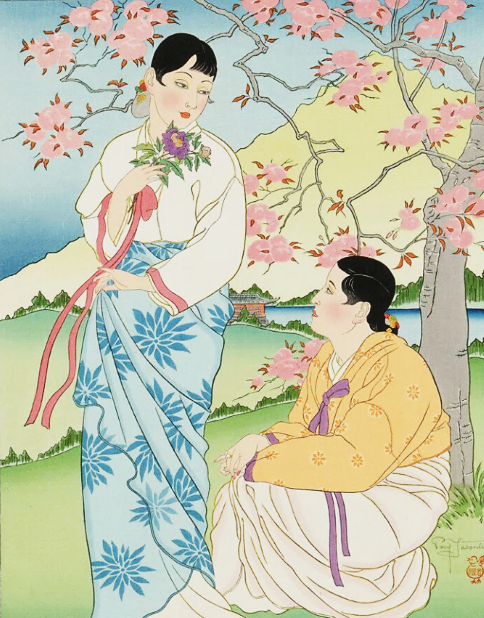


The presence of a large number of women in the Far Eastern movement is a fundamental element. It reflects a general evolution of Western society at the beginning of the 20th century. Feminism is active there, particularly in the United States and Great Britain with the “suffragettes”. The role played by women during the First World War enabled them to acquire the right to vote in certain countries.
The fight is not only in the field of civil rights but also extends to artistic creation. Already, Impressionism had granted a place to women like Berthe Morisot, Marie Bracquemond, Mary Cassatt or Lilla Cabott Perry, but they remained exceptions and the omnipresence of men was pertinent. The interest they therefore decided to take in foreign paintings, themselves generally considered “inferior”, gave them more freedom to escape unfair competition, paving a clear a path towards recognition. Expatriation also offered them the possibility of escaping a dominant environment, especially since this first “globalization” opened the doors to distant travel. North Africa and the Middle East were already dominated by men. The Far East still appeared free and full of promise, and so it is chosen. Going alone to the end of the world, living abroad, adopting its habits and customs, painting differently by acquiring local techniques, achieving financial autonomy and demonstrating in all circumstances an uncommon strength of character are the traits of these exceptional women, whom conquered with great struggle their independence. Tributes are due to Helen Hyde, Lilian Miller, Bertha Lum, Elizabeth Keith, Antoinette Boullard-Devé, Alix Aymé, Katharine Jowett, Léa Lafugie, Elyse Lord, Anna Hotchkiss, Mary Mullikin, Simone Gouze, Geneviève Couteau, Renée Jullien, Esther Hunt and many more.
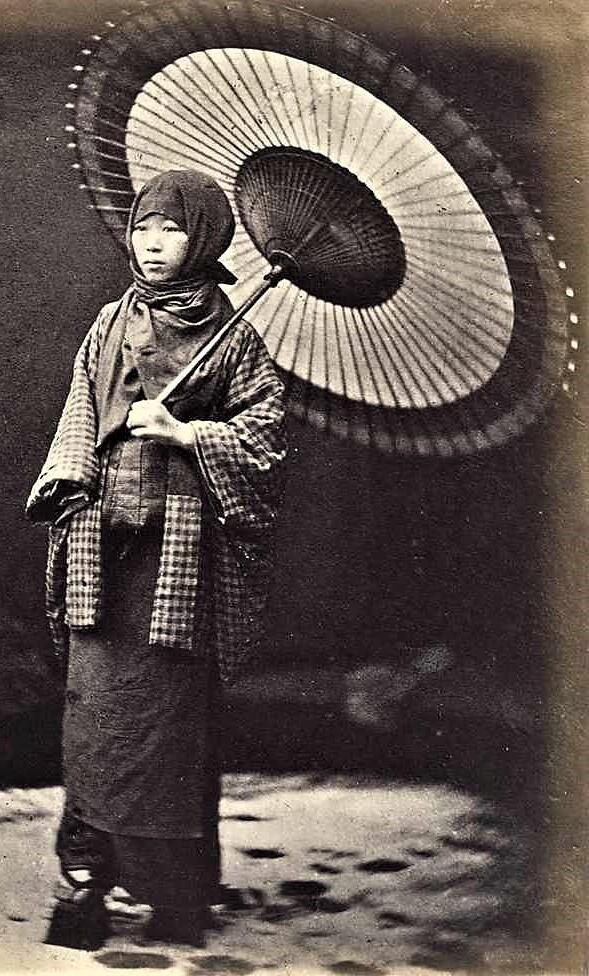


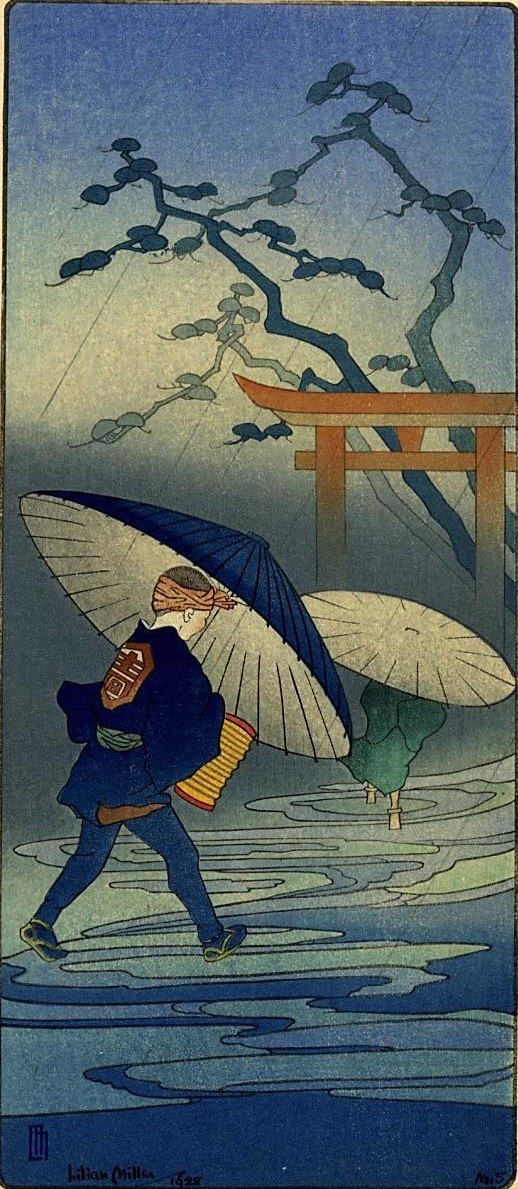


For several of these artists, Helen Hyde, Lilian Miller, Elizabeth Keith, this independence goes hand in hand with a deliberately chosen celibacy that at times accompanied discreet or assertive feminine friendships. It should also be noted that when they married, it was to secure security and independence, as seen with Katharine Jowett or Elyse Lord, who married Reverends of the Anglican Church, or as seen with Bertha Lum and Léa Lafugie, who married older husbands.
These artists bring all their femininity to their painting with the portraits of women and of children. These subjects are numerous, especially from Helen Hyde who gives the whole movement an empathetic approach, for men as well as for women, a tenderness in the contours, a richness in the colours, a softness in the shades chosen and a deep respect for the characters. This feminine touch becomes in men a deep sensitivity. For all these artists, the richness of a diverse humanity is a creed.
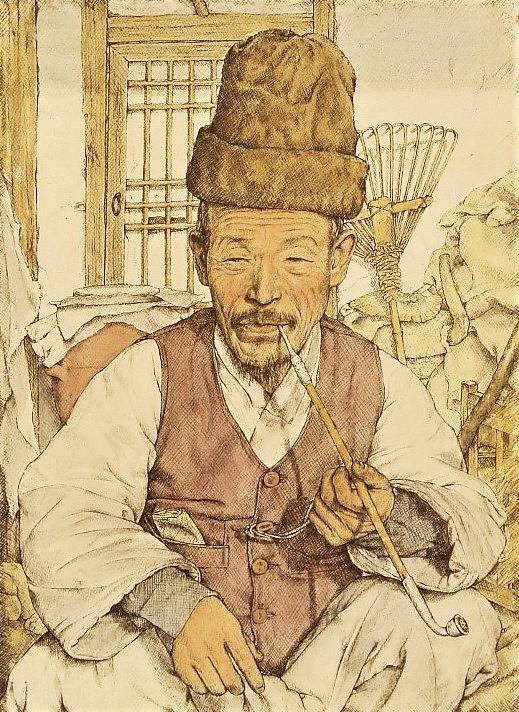


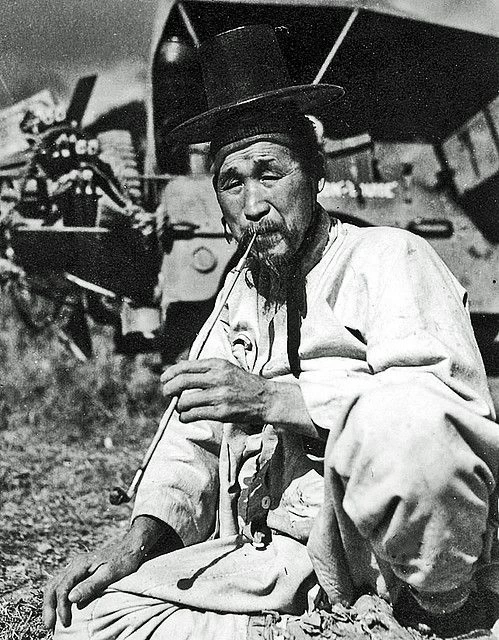


Going to meet an "Other" world required undertaking long journeys : the crossings lasted for months and one did not hesitate to stop over for weeks or months in mythical ports, from Ceylon to Saigon, from Calcutta to Jakarta, before reaching Shanghai or Yokohama. One often settled and moved, travelling only with the necessary material for painting and engraving. One travelled constantly, always on the lookout for new discoveries, and the years passed by. One returned to the West for a few months to exhibit there and keep in touch with the big galleries and then came back very quickly to resume the work undertaken. For some, wandering and discovering are, in themselves, primary sources of inspiration. We can refer to Alexandre Iacovleff, Léa Lafugie, Anna Hotchkis and Mary Mullikin who, sketchbooks in their hands, surveyed distant and dangerous lands, on foot or on horseback, staying for months with locals or with missionaries lost in their solitude. For others, the departure towards the East would be without return. Charles Bartlett who left Europe in 1916 for Colombo and who drifted for 24 years towards the East, found his death in Hawaii. Paul Jacoulet who arrived in Japan at the age of three never left.
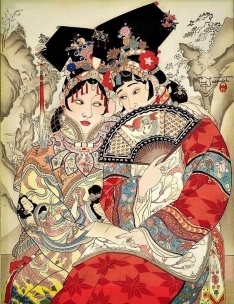
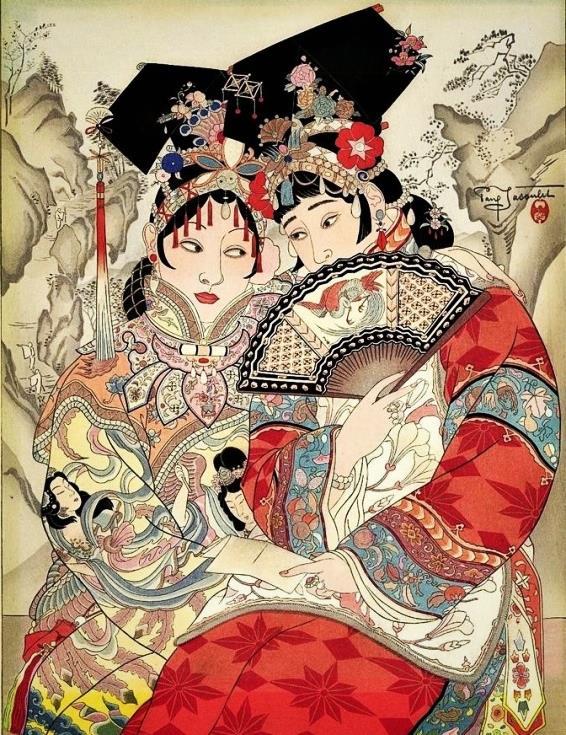

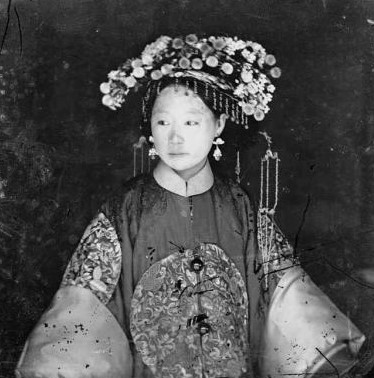


These painters of Far Orientalism also accompany a movement of ideological openness of the West towards cultures and civilizations that are not their own. Their approach, like those of artistic Japonism or academic Sinology which flourished at the turn of the century, is not the mark of the triumphant imperialism of the time but on the contrary of the recognition of the diversity of the world. The works of our painters are thus often directly inspired by local legends such as with Bertha Lum or the most classic Chinese painting from Elyse Lord.
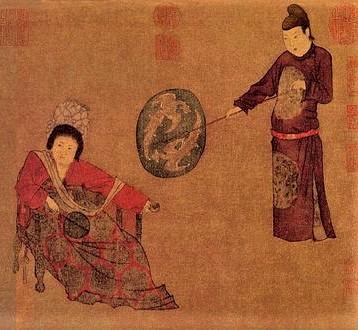


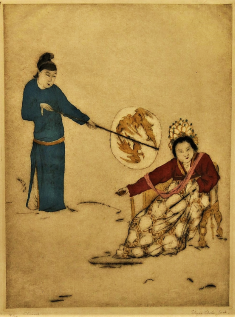
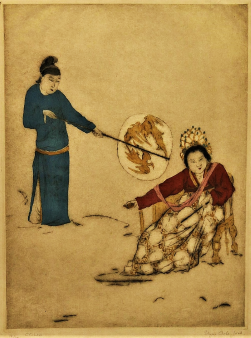

With an acute awareness of reality and profound regret, they also portrayed vanishing worlds and cultures. The work of Paul Jacoulet is deeply marked by this when he painted the tattooed natives of the Pacific islands or the marvelously hatted but sadly colonized Koreans or the endangered Manchurian princesses. The portraits painted by Alexandre Iacovleff also depicted men and women heirs to a millennial world that was coming to an end.
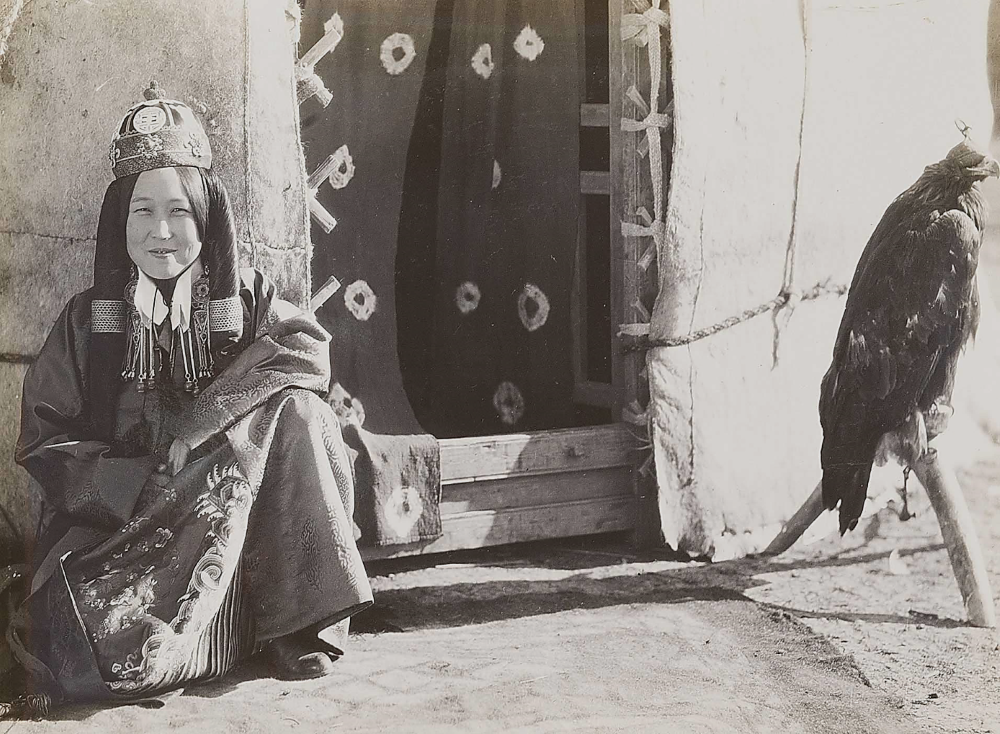
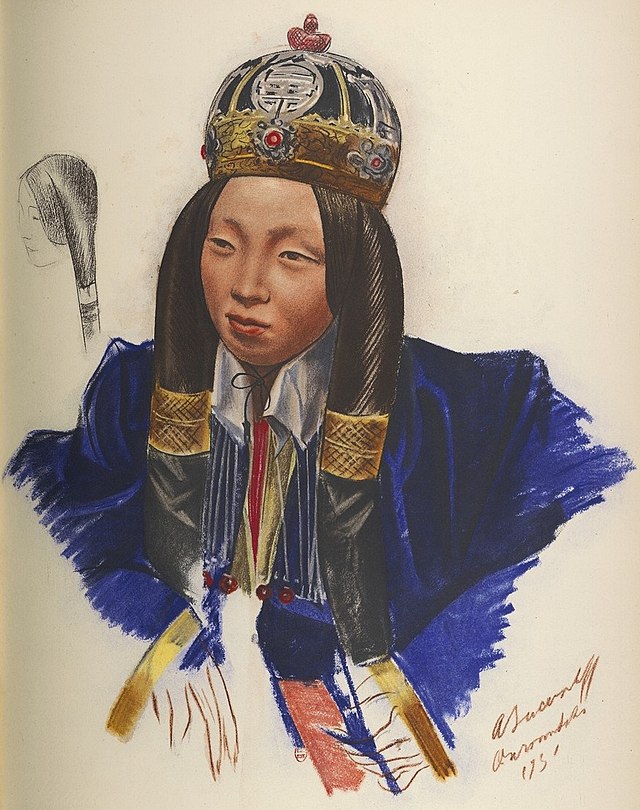
The artists of Far Orientalism may have attempted to leave their world of origin to reach "the Other" world but were overtaken by the jolts of History which then tore the West from Asia : concern over the rise of pan-Germanism at the beginning of the century had already forced Elyse Lord or John Winkler to anglicize their names. Cyrus Baldridge became a valiant soldier of the deadly war of 14-18 while at the same time Charles Bartlett decided to leave Europe in ruins for good. Alexandre Iacovleff fled the Bolshevik revolution to take refuge in Paris. Katharine Jowett, Léa Lafugie, Paul Jacoulet, Noël Nouet were imprisoned by the Japanese soldiery and Bertha Lum by the Chinese communists.
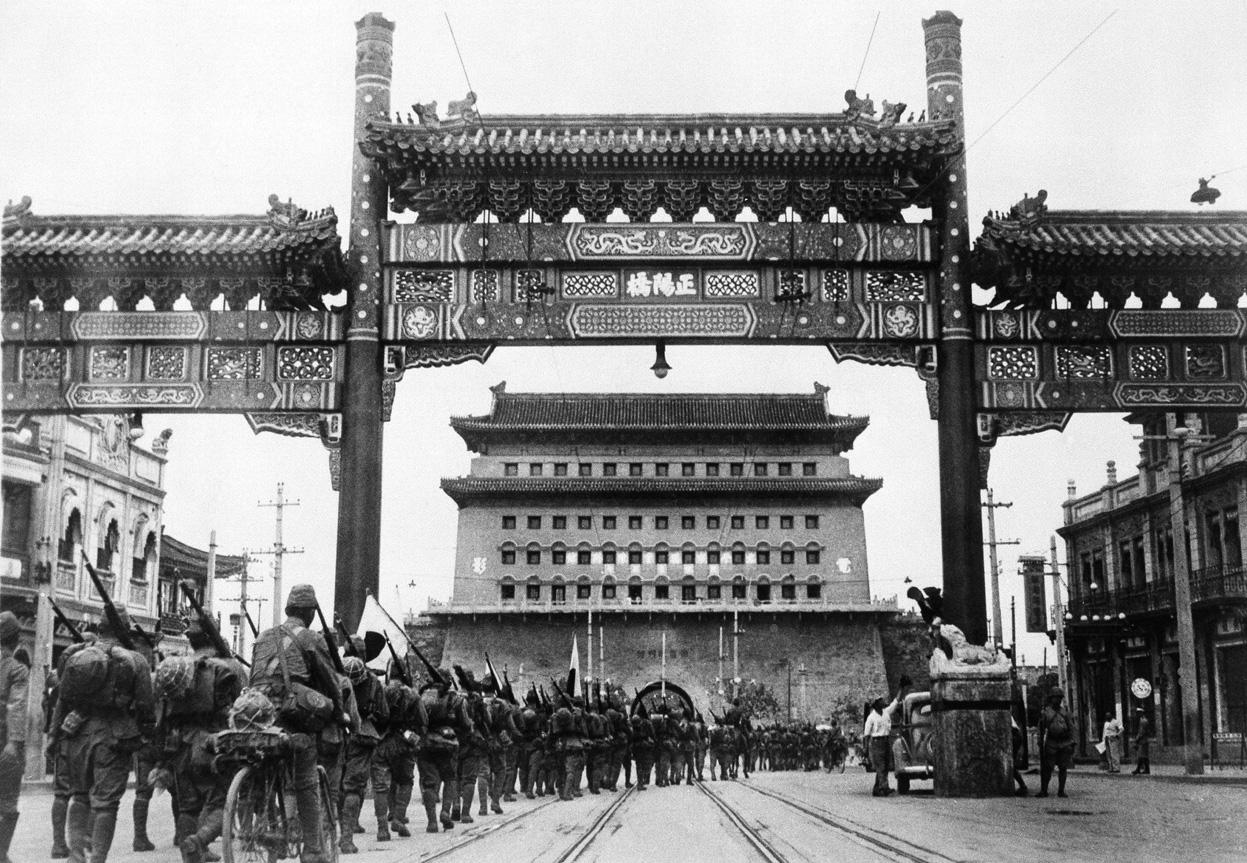
The most poignant case is that of Lilian Miller. All her life, she sought to achieve this magical synthesis between the East and West. First and foremost, via her work where her passion for Japan and Korea blended itself to her personal creative force (she was the only one to carry out the three printmaking professions herself : drawing, engraving and printing), but also in her very existence, completely adopting the Japanese way of life, assuming a constitutive ambivalence of her being. Her dream collapsed in December 1941 during the Japanese attack on Pearl Harbor. Her life was to end two years later, ill and yet still engaged in the US Navy for the defense of her homeland.
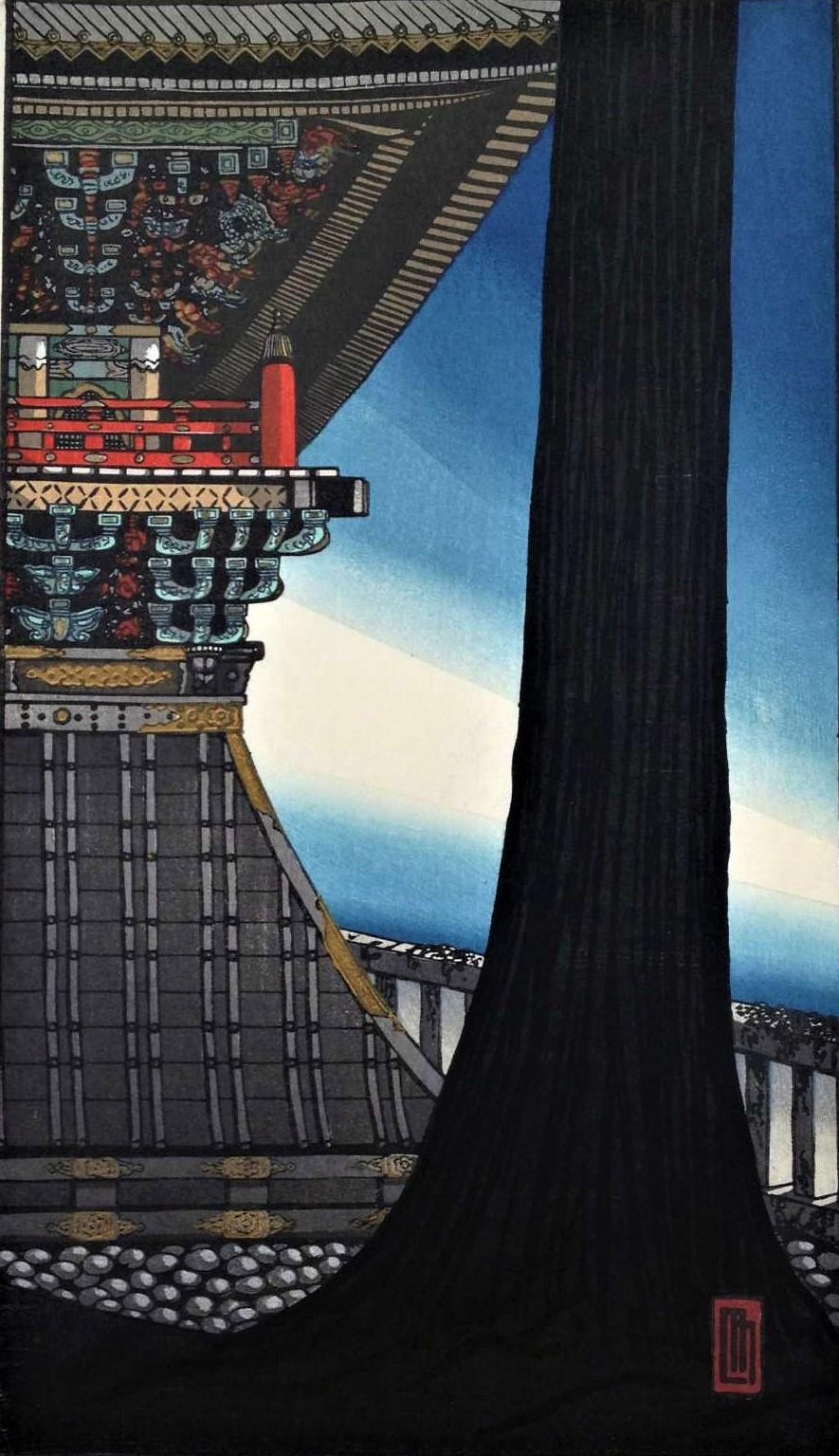
All are victims of the Second World War and its consequences. Europe is torn apart like never before, the number of victims and the destruction are considerable, winners and losers take decades to recover from the chaos. It becomes difficult to think about art, even more so when it is distant. The fall of the Japanese Empire, the conflicts in China and the closure of the country in 1949, the civil war in Korea and the split of this unfortunate nation generate a clear decline in artistic interest given to the Asian continent which had previously awakened so many dreams. Most of the surviving artists of Far Orientalism thus pack their bags, literally and figuratively. They return to their country of origin and change subjects of inspiration, such as Baldridge taking refuge in New Mexico, Handforth in California, Hotchkis returning to his native Scotland, Jowett in Devon, Lafugie in Paris. Pieter Brown even completely changed his identity and only painted sad still lives.
Only Paul Jacoulet, Noël Nouet and Willy Seiler chose to remain in Japan after the war and continued their work for fifteen years. Jacoulet produced in particular an exceptional quality of creativity, equal to that which he had before the global cataclysm. It is true that, for many decades, Jacoulet had already become Japanese…
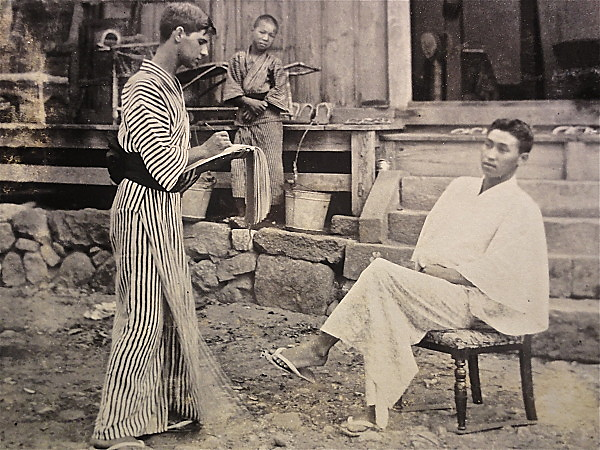
*
* *
This site’s main objective is to make the Far Eastern movement better known. For fifty years, it was carried by a group of men and women who wanted to broaden their knowledge of the world and who chose Asia as a field of study, which then became of artistic expression. This did not stem from a thirst for exoticism, even if this sometimes accompanied its discovery, but this is where they found another civilization, rich in cultures forged by a thousand-year-old history.
This discovery of diversity, of the existence of another world other than its own, is a long process that is still unfinished. The West had no knowledge of the Far East until the 13th century when the first missionaries like Guillaume de Rubrouck or the first merchants like the Polos of Venice “discovered” it. The Portuguese and Spanish, Batavian and British galleons, the Italian, German, Belgian and French Jesuits, as well as the philosophers of the Enlightenment gradually made known this long hidden side of the earth. If the West sought in the 19th century to conquer it without succeeding (and Japan to dominate it), at the same time many intellectuals including writers such as Victor Segalen or Pearl Buck, archaeologists such as Aurel Stein or Édouard Chavannes, artists such as the impressionists, photographers such as Jules Itier, Felice Beato or John Thomson, sinologists such as Henri Maspero, Marcel Granet or Paul Pelliot continued their secular work of knowledge and recognition. Our Far Eastern movement was a part of this effort to understand a multipolar world enriched by its differences. It also offered us the beauty and simplicity of now immortal engravings, drawings and paintings.
*
The main painters of the movement are presented in the menu of this site in alphabetical order. For each of them, a biographical presentation allows to situate the artist and a bibliography is added when possible, followed by photographs of the works that are part of my personal collection.
The computer tool today makes it possible to deepen the knowledge that we have of these exceptional men and women. However, I underline with gratitude the immense interest represented by the consultation of the site of Darrel C. Karl, http://easternimp.blogspot.com/.
We can also consult with interest the sites of certain Art galleries such as Campbell-Fine-Art.com ; Annexgalleries.com ; Castlefinearts.com ; Scholten-japanese-art.com/western-artists.php ; Hanga.com.
